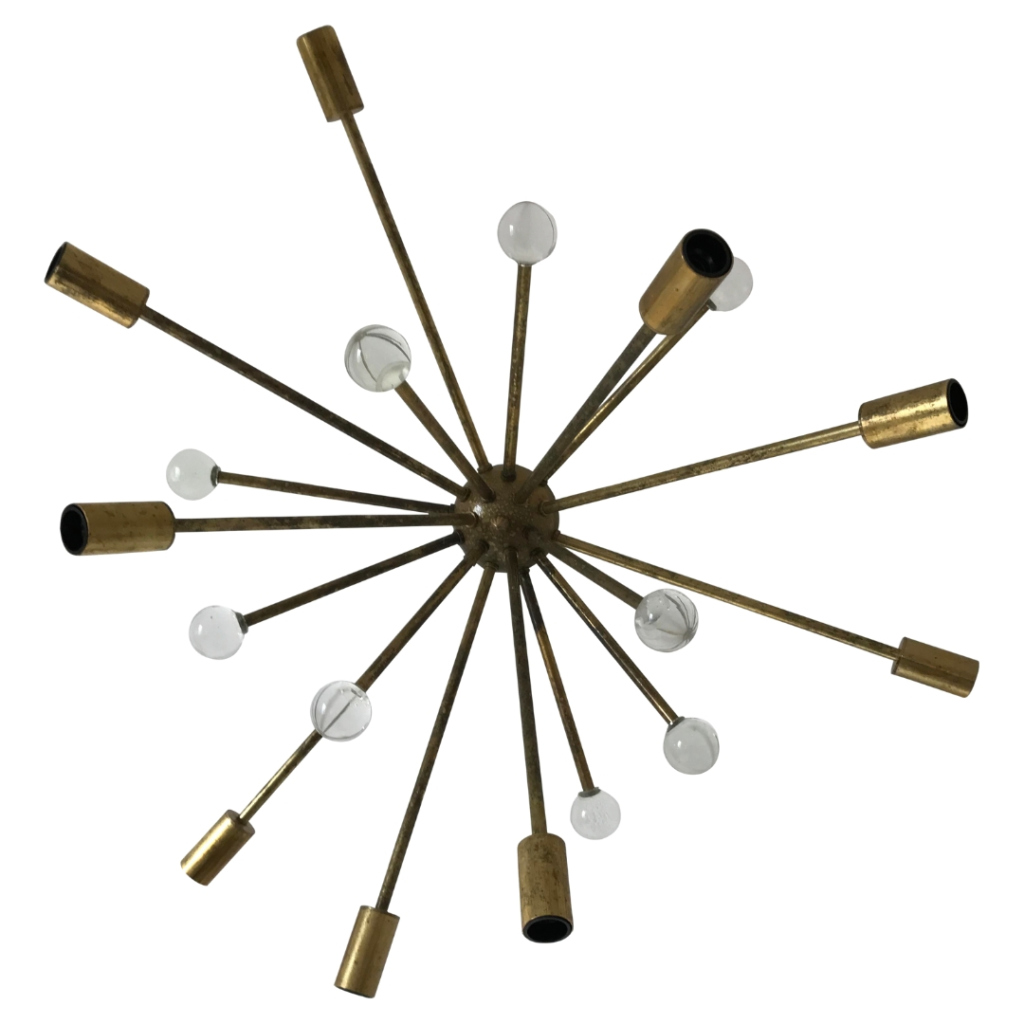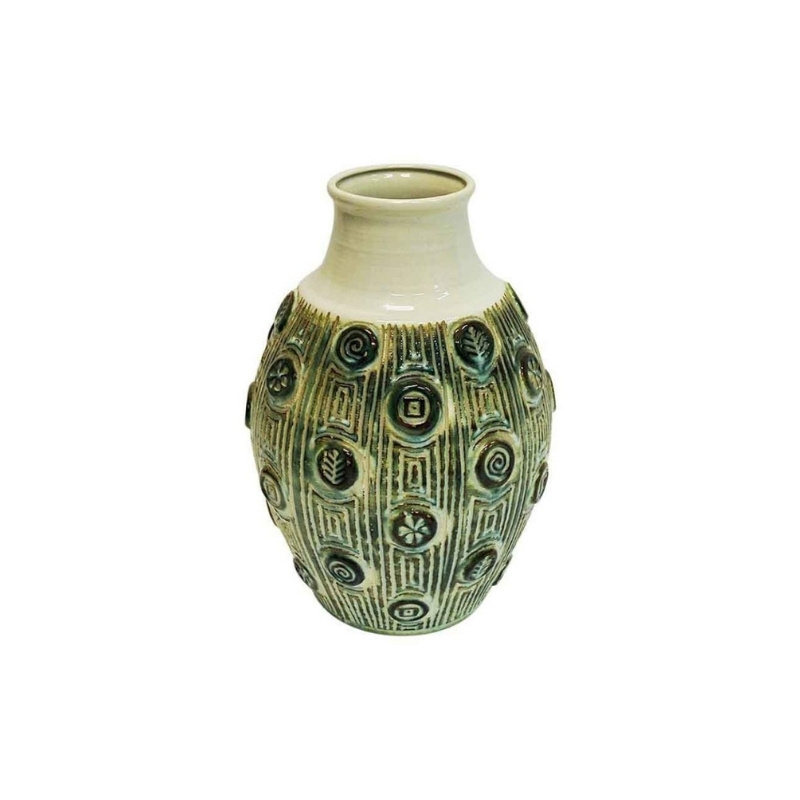.
Thanks Gusatvo, that brings up some worthwhile things to think about.
I wonder though how, for example, the concept behind the Droog chest of drawers can 'trickle down' (oh my god I just quoted Thatcher!) to a larger market or what forms the new approaches might take? Smaller production runs? Customisation, localised production and furniture miles? I don't know, its early days I suppose. I think a lot of more conventional craftsman and less well known or indeed anonymous architects and designers have been fulfilling these 'new' ideas for a long time, perhaps a better path is all under our noses already.
On the idea of trickle down though I have recently seen in a shopping centre a bastardised version of Luigi Colanis childs combination seat desk and Brauns graphic style splashed across some pretty second rate electronics.
Heath baby...
"french cultural theory"?
Better re-read, no make that read Rollie before you quote him. 🙂
Would you like to go on about Rollie and comic books, er, hidden meanings, er, mythologies, too? Doah!
Hey, I've got an even better one.
"Wait till Heathy discovers Thomas Paine and Uncommon Sense, er, I mean Thomas Paine and Sense and Sensibility."
You're an intellectual tour de farce, er, force, Heathster. Keep'em coming.
Heath...
It is not me bringing up Roland Bartholomew, er, Barthes and "French cultural theory." 🙂
And please don't superficially mangle semiotics, too, unless it some how helps you work through to an awareness of the issues I am raising here.
And I guess it almost goes without saying, "Don't insult my intelligence, or waste my time, with foppish responses." If you don't know anything about what I am talking about and don't want to know, just read another theory of color book, and scroll on.
Further, I am sorry that the aspect of design--the political one related the brutal acquisition of raw materials used in design--the one that I have recently discussed at unusual length (for this board) is frightening and ugly and scary to you.
But it is hard for everyone, Heath, not just for you. It is especially hard for the people being tortured 24/7, as part of government depatterning experiments. And it is a real drag for those that get disappeared and shot in the head by death squads in countries with oil, or strategic flanks to oil.
It is less hard for those who have merely thought about it at length, and for those who are just confronting it, but it is hard even for those persons dealing second hand with it. The only ones it is not hard for are those that are in denial about it.
continued for Heath
I seriously doubt I would be mentioning this ugly and repulsive and scary issue, if it were easy for everyone. If it were easy for everyone, everyone would long ago have insisted that it stop, right?
Frankly, if what I am talking about--this political/moral/ethical/legal dimension of design--is too disturbing to you, I want you NOT to think about it. DON'T read my posts. Hurting, or scaring, another person with this hurtful and scary subject does no good at all. This subject is one that everyone has to come to realization of and deal with in their own ways. But people have to reach out to others on this subject in order to build sufficient awareness for society to seek peaceful, orderly, responsible change regarding it.
I am not asking you to read a word I am writing about the political/moral/ethical/legal points of fit (and lack thereof) in design that connect to the evils of torture and murder to gain raw materials. You are choosing to do so. So: as long as you do, at least respect the dead and tortured enough in this otherwise often beautiful world and not trivilize what befell them and my remarks about them. Wait and speak when you have come to grips with this issue your own way and know that when you do come to grips with it, I and many others will be grateful to hear that another person has fought through the horror of the awareness of this sort of thing and said, as Ghandi might were he alive today, "Oh, yes, Mr. President Obama, your torturers will leave America, and the rest of the world, too, one day. And America and the UK will one day resume observing the Geneva Conventions as civilized nations. It is only a question of time, of how many must suffer and die until you realize and do what you should have realized and done all along."
continued for Heath
"Action expresses priorities."--Ghandi
"An ounce of practice is worth more than tons of preaching."--Ghandi
My posts here are small public actions aimed at kindling awareness in a profession regarding the moral/ethical/legal/political points of fit of the professional choices being made in design regarding consumer preference in materials.
I am speaking as one former professional, from another field, to others in design.
I am not preaching. I am not telling you my way is the only way. I am not even telling you I have a way for certain. I am stating a fact and asking you to think about it and act. The fact is that design IS stimulating and channelling demand toward things that require certain raw materials that are often acquired by means of theft, illegitimate warfare, torture, and murder. I am asking only that you design around those materials that create a big torture/murder footprint, whenever you can, in the same way you would design around materials that create a big carbon footprint, whenever you can.
Some action is better than no action.
This designing around big torture/murder foot print raw materials, whenever possible, is such a tiny and humane request, when one stops and thinks about it.
One has to wonder why there is such resistance to acting humanely in this regard?
"Anger and intolerance are the enemies of correct understanding."--Ghandi
"Be the change that you want to see in the world."--Ghandi
I want to see people talking about the wrongness of torture and murder to acquire raw materials.
I am talking about them, kicking them out of the design closet, and hoping others will out them also.
"Even if you are a minority of one, the truth is the truth."--Ghandi
Fortunately, I am not a minority of one.
Design and Democracy
I started before with an article written from Europe, a Dutch perspective.
Here I'll include an article from here, from South America. More fair to complete it form here/me I think 😉
Is by Gui Bonsiepe a German industrial designer, who studied and teach-ed at prestigious Ulm, and when Ulm closed emigrated to SouthAmerica, then he lives in Chile, moved to Brasil and to Argentina. He had recently wrote or compile the book "Industrial design in Latin America and Caribbean" the very first jumbo book, (Here I have a pendant answer to Mariescotch) that was made in cooperation with many different authors from different countries with many points of view. Really hard work I think. Although a Southamerican way to do things I think...
Well here is the full article:
Design and Democracy
Note
This is a slightly abbreviated translation of the Spanish speech given atthe Metropolitan University of Technology, Santiago de Chile, June 2005. It has been published in Design Issues.Gui Bonsiepe
I shall present a few thoughts about the relation between democracy and design, about the relation between critical humanism and operational humanism. This issue leads to the question of the role of technology and industrialization as a procedure for democratizing the consumption of goods and services, and finally to the ambivalent role of esthetics as the domain of freedom and manipulation.
The main theme of my lecture is thus the relation between design "in the sense of projecting" and autonomy. My reflections are open-ended and do not pretend to give quick and immediate answers. The university-still- offers a space to pursue these questions that will not generally be addressed in professional practice with its pressures and contingencies.
Taking a look at the present design discourse one notes a surprising-and I would say alarming- absence of questioning design activities.
Concepts like branding, competitiveness, globalization, comparative advantages, life-style design, differentiation, strategic design, fun design, emotion design, experience design, and smart design prevail in design magazines and the -all too few- books about design. Sometimes one gets the impression that a designer aspiring to two minutes of
fame feels obliged to invent a new label for setting herself or himself apart from the rest of what professional service offers. I leave aside coffee table books on design that abound in pictures and exempt the reader from intellectual efforts. The issue of design and democracy doesn't enjoy popularity -apart from a few laudable exceptions.
p2
If we look at the social history of the meaning of the term "design" we note on the one side a popularization, that is a horizontal extension, and on the other side a contraction, that is a vertical reduction. The architectural critic Witold Rybczynski recently commented on this phenomenon:
"Not so long ago, the term "designer" described someone like Eliot Noyes, who was responsible for the IBM Selectric typewriter in the 1960s, or Henry Dreyfuss, whose clients included Lockheed Aircraft and Bell Telephone Company ... or Dieter Rams, who created a range of austere-looking, but very practical products for the German company Braun. Today, »designer« is more likely to bring to mind Ralph Lauren or Giorgio Armani, that is, a fashion designer. While fashion designers usually start as couturiers, they -or at least their names- are often associated with a wide variety of consumer products, including cosmetics,perfume, luggage, home furnishings, even house paint. As a result, »design« is popularly identified with packaging: the housing of a computer monitor, the barrel of a pen, a frame for eyeglasses."
More and more design moved away from the idea of "intelligent problem solving" (James Dyson) and drew nearer to the ephemeral, fashionable and quickly obsolete, to formal-aesthetic play, to the boutiquization of the universe of products of everyday life. For this reason design today is often identified with expensive, exquisite, not particularly practical, funny and formally pushed, colorful objects. The hypertrophy of fashion aspects is accompanied and increased by the media with their voracious appetite for novelties. Design has become thus a media event ?and we have a considerable number of publications that serve as resonance boxes for this process. Even design centers are exposed to the complicity of the media running the risk of failing to reach their original objective: to make a difference between design as intelligent problem solving and styling. After all it is a question of a renaissance of the tradition of the Good Design Movement, but with different foci and interests. The advocates of Good Design pursued socio-pedagogical objectives, the Life Style Centers of today pursue exclusively commercial and marketing aims to provide orientation for consumption patterns of a new ?or not that new? social segment of global character, that can be labeled with the phrase: "We made it."
The world of everyday products and messages, of material and semiotic artifacts has met -with rare exceptions- in cultural discourse (and this includes the academic discourse) a climate of benign indifference that has its roots in classical culture in the medieval age when the first universities in the Occident were founded.
p3
This academic tradition did not take note of the domain of design (in the sense of project) in any of its disciplines. However, in the process of industrialization one could no longer close ones eyes to technology and technical artifacts that more and more made their presence felt in everyday life. But the leading
ideal continued to be cognitive character in the form of the creation of
new knowledge. Never design achieved to establish itself as parallel
leading ideal. This fact explains the difficulties of integrating design
education in the institutions of higher learning with their own traditions
and criteria of excellence. This becomes evident in doctoral programs
in design that favor the production of discursive results and
don?t concede projects the same value or recognition as the production
of texts. The sciences approach reality from the perspective of cognition,
of what can be known, whereas the design disciplines approach
reality from the perspective of projectability, of what can be designed.
These are different perspectives, and it may be hoped that in the future
they will transmute into complementary perspectives. So far design has
tried to build bridges to the domain of the sciences, but not vice versa.
We can speculate that in the future design may become a basic discipline
for all scientific areas. But this Copernican turn in the university
system might take generations if not centuries. Only the creation of
radically new universities can shorten this process. But the decision
space of government institutions is limited due to the weight of academic
traditions and due to the bureaucratization with emphasis on
formal procedures of approbation (title fetishism). Therefore the new
university will probably be created outside of established structures.
Relating design activities to the sciences should not be misinterpreted
as a claim of a scientific design or as an attempt to transform design
into a science. It would be foolish to design an ashtray with scientific
knowledge. But it would not be foolish ?and even mandatory? to tap
scientific knowledge when designing a milk package with a minimal
ecological footprint. It is no longer feasible to limit the notion of design
to design disciplines such as architecture, industrial design or communication design because scientists are also designing. When a group of agricultural scientists develops a new sweet from the carobbean that contains important vitamins for school children, we have a clear example of a design activity.
p4 [here is the focus he said ;-)]
Now I want to focus on the central issue of my lecture: the relation
between democracy and design. Indeed during the last years the notion
of democracy has been exposed to a process of wear and tear so that it
is advisable to use it with care. When looking at the international scene
we cannot avoid stating that in the name of democracy colonialist invasions,
bombardments, genocides, ethnical cleaning operations, torture,
and breaking international laws have been ?and are? committed,
almost with impunity, at least for the moment. The invoice for this lack
of humanity is not known. Future generations will probably have to
carry the burden. With democracy these operations have nothing in
common.
According to the neoliberal understanding, democracy is synonymous
with the predominance of the market as an exclusive and almost sanctified
institution for governing all relations within and between societies.
So we face questions: How can the notion of democracy be recovered?
How can the notion of democracy gain credibility again? How one can
avoid the risk of being exposed to the arrogant and condescending attitude
of the centers of power that consider democracy as nothing more
than a tranquilizer for public opinion in order to continue undisturbed
with business as usual?
I am using a simple interpretation of the term »democracy« in the
sense of participation so that dominated citizens transform themselves
into subjects opening a space for self-determination, and that means a
space for a project of one's own accord. Formulated differently: democracy
reaches farther than the formal right to vote, similarly the notion
of freedom reaches farther than the possibility to chose between a hundred
varieties of cellular telephones or a flight to Orlando to visit the
Epcot Center or to Paris to look at paintings in the Louvre.
I favor a substantial, and thus less formal, concept of democracy as the
reduction of heteronomy, i.e. domination by external forces. It is no
secret that this interpretation fits into the tradition of the Enlightenment
that has been criticized so intensively by amongst others Jean
Francois Lyotard when he announced the end of the grand narratives. I
do not agree with this approach or other postmodern variants. Without
a utopian element, another world is not possible and would remain the
expression of a pious ethereal wish without concrete consequences.
Without a utopian ingredient, residual though it may be, heteronomy
cannot be reduced. For this reason the renunciation of the project of
enlightenment seems to me the expression of a quietist, if not conservative
attitude 'an attitude of surrender that no designer should be
tempted to cherish.
p5
In order to illustrate the necessity to reduce heteronomy I am using a
contribution from a linguist, a specialist in comparative literature
Edward Said, who died last year. He characterizes in an exemplary
manner the essence of humanism, of a humanist attitude. As a philologue
he limits the humanist attitude to the domain of language and
history: »Humanism is the exertion of one's faculties in language in
order to understand, reinterpret, and grapple with the products of language
in history, other languages and other histories.« . But we can
extend this interpretation to other areas too. Certainly the intentions of
the author will not be bent when transferring his characterization of
humanism -with corresponding adjustments- to design. Design humanism
would be the exercise of design activities in order to interpret the
needs of social groups and to develop viable emancipatory proposals in
the form of material and semiotic artifacts. Why emancipatory? Because
humanism implies the reduction of domination. In the field of design it
means to focus also on the excluded, the discriminated, and economically
less favored groups as they are called in economist jargon, which
amounts to the majority of the population of this planet. I want to
make it clear that I don?t propagate a universalistic attitude according
to the pattern of design for the world. Also I want to make it clear that
this claim should not be interpreted as the expression of a naive idealism,
supposedly out of touch with reality. On the contrary, each profession
should face this uncomfortable question, not only the profession
of designers. It would be an error to take this claim as the expression
of a normative request of how a designer -exposed to the pressure of
the market and the antinomies between reality and what could be reality-
should act today. The intention is more modest, that is to foster a
critical consciousness when facing the enormous imbalance between
the centers of power and the people submitted to these powers. Because
the imbalance is deeply undemocratic insofar as it negates participation.
It treats human beings as mere instances in the process of
objectivization (Verdinglichung) and commodification.
Here we come to the role of the market and the role of design in the
market. In a recently published book, the economist Kenneth Galbraith
analyses the function of the concept of the market that according to
him is nothing more than a smokescreen for not talking openly about
capitalism, a term that not in all social classes and in all countries enjoys
a high rating on the popularity scale.
p6
Galbraith inserts design in
the context of techniques of corporations for gaining and consolidating
power: »Product innovation and modification is a major economic function,
and no significant manufacturer introduces a new product without
cultivating the consumer demand for it. Or forgoes efforts to influence
and sustain the demand for an existing product. Here enters the world
of advertising and salesmanship, of television, of consumer manipulation.
Thus an impairment of consumer and market sovereignty. In the
real world, the producing firm and the industry go far to set the prices
and establish the demand, employing to this end monopoly, oligopoly,
product design and differentiation, advertising, other sales and trade
promotion.« (4).
Galbraith criticizes the use of the term »market« as an anonymous and
impersonal institution and insists instead on talking about corporate
power. Against this use of design ?after all a tool for domination?
stands the intent not to remain fixed exclusively on the aspects of
power and of the anonymous market. In this contradiction design practice
is unfolding and resisting a harmonizing discourse that is camouflaging
the contradictions. One can deny the contradictions, but one
cannot bypass them.
The issue of manipulation has a long tradition in design discourse, especially
in advertising. I remember a popular book that at its time provoked
a wide resonance,
The Hidden Persuaders by Vance Packard
(1957). But one should be on one?s guard against a critique with
declamaratory character that merely denounces. More differentiation is
required. Manipulation and design share one point of contact: appearance.
We design, amongst others and certainly not only, appearances.
For this reason I once characterized the designer as a strategist of appearances,
that is phenomena that we perceive through our senses,
above all visual senses, but also tactile and auditory senses. Appearances
lead us to the issue of aesthetics -an ambivalent concept. On the
one side aesthetics represents the domain of freedom, of play -and
some authors claim that we are only free when we play; on the other
side aesthetics opens the access to manipulation, that is the increase
of outer directed behavior.
p7
When designing products and semiotic artifacts
we want to seduce, that is foster a positive -or according to context,
negative- predisposition towards a product and sign combination.
Depending on intentions design leans more to one pole or the other,
more to autonomy or more to heteronomy.
At this point I want to insert a few reflections on technology. The term
technology in general is understood as the universe of artifacts and
procedures for producing merchandises with which companies fill the
stage of everyday practice. Technology implies hardware and software ,
and software implies the notion of design as a facet of technology that
cannot be dispensed with. Here in Latin America we face the problem of
technology policy and industrialization policy. Research on these issues
reveals interesting details about progress and set-backs. But these seem
to me to favor a reductionist interpretation of technology. Only in exceptional
cases texts mention the question of what is done with technology.
The question for the design of products remains unanswered.
This presents a weak point without wanting to underestimate the efforts
by historians. But one cannot defend them against the reproach of
being blind to the dimension of design, the dimension of projects, or at
least of facing this dimension with indifference. The motives for industrialization
include the wish to diversify exports and not to remain an
exporting economy of commodities without added value. But behind
this plausible argument is hidden another generally not explicitly formulated
motif. I am referring to the idea that apart from the growth of
the GNP, industrialization is the only possibility for democratizing consumption
to provide for a broad sector of the population access to the
world of products and services in the different areas of everyday life:
health, housing, education, sports, transport, work to mention only a
few.
However to mention today the role of government in promoting industrialization
can appear almost as an offense of good manners. The role
of public intervention has been demonized with one exception, paying
the debt of a bankrupt privatized service. In that case public resources
are welcome, thus reinforcing the idea that politics is the appropriation
of public goods for private purposes. But when the history of industrialization
and technology of this subcontinent will once be written, one
shall see with clarity that the role of government has been decisive,
though the detractors of the public sector with their bellicose voices
have belittled its function and contributions.
p8
If we look at the recent history of Argentina
-a country that until a few years ago followed in
subservient manner the impositions of the International Monetary Fund
and that in a moment of delirium enthusiastically praised its »carnal
relationships« with the leading military and economic power
- then we
see that this country didn't fare very well with this policy of relentless
privatization and reduction of government presence. This process
plunged a great part of the population into a situation of poverty unknown
until then, and led to an income concentration with the corresponding
bipolarization of the society divided in two groups: the excluded
and the included. Privatization in this context is synonymous
with de-democratization because the victims of this process have never
been asked whether they approved the credits and sales of public property
that led the country into bankruptcy. Relentless privatization and
reduction of the role of government, the unconditional opening of the
economy for imports initiated a process of de-industrialization of Argentina,
thus destroying the foundations for productive work, including
work for industrial designers.
The industrialization policies in various countries in which I have participated,
above all Chile, Argentina and Brazil concentrated exclusively
on hardware, leaving the communication and information industries
untouched. Today the constellation has changed radically. An updated
industrialization policy would need to include the information sector of
the economy, for which graphic design and information design can provide
essential contributions. Here new problems show up that confront
designers with cognitive demands that in design education programs
generally are not taken into consideration. The expanding process of
digitalization fostered a design current which claims that today the
important design questions are essentially of symbolic character.
As second argument for the semanticization of products -and thus for
semantizationof the designer's work- miniaturization is mentioned,
made possible by printed circuits and cheap chips. These do not allow
us to see how the products are working ? functions become invisible.
Therefore the designer's task would consist in rendering these invisible
functions visible. Though it would be blind to deny the communication
and symbolic aspects of products, their role should not be overvalued as
some authors do.
If you need any help, please contact us at – info@designaddict.com









